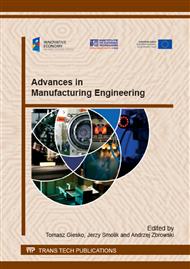p.127
p.137
p.146
p.155
p.163
p.171
p.181
p.191
p.199
Research Works on the Influence of Substituting the Refrigerant R22 with Propane (R290) on the Condition of the State of Sliding Surfaces Occurring in Piston Compressors
Abstract:
Motion elements of refrigerating compressors, depending on the applied oils and refrigerants, can be exposed to various wear processes. The presence of refrigerant makes lubricating and anti-wear properties of the mixture of oil and refrigerant much worse than in the case of oil with no refrigerant. Regulations concerning the application of substances weakening the ozone layer, valid at present, demand the withdrawal of operating synthetic agents refrigerating installations type HCFC – among others the popular R22. This paper presents the influence of different mixtures of oils and refrigerants on the moment of friction and the surface condition of cast iron and aluminium PA6. The tests were carried out on a friction machine with the use of a node type block-on-ring, which is located inside a pressure chamber that simulates the refrigeration compressor inside. The results of the performed tests confirm the possibility of using green refrigerant R290 (propane) as a substitute for R22, while keeping the existing mineral oil in the refrigerating installation.
Info:
Periodical:
Pages:
163-170
Citation:
Online since:
November 2014
Authors:
Keywords:
Price:
Сopyright:
© 2015 Trans Tech Publications Ltd. All Rights Reserved
Share:
Citation:


